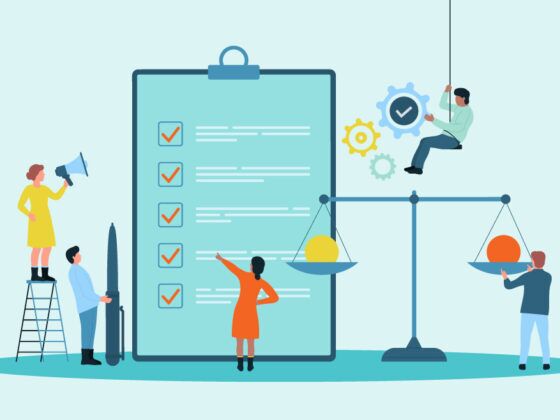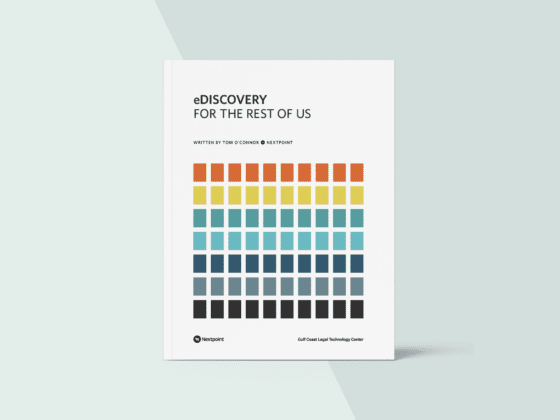For years, there’s been a popular sentiment that the absence of economies of scale made eDiscovery impractical for small law firms, especially those with infrequent cases.
While that may have been a legitimate argument in the past, the hard truth is that eDiscovery has become more necessary to these firms’ success, not less. To reconcile these two realities, small law firms will need to find affordable eDiscovery software that fits their project load and develop ways to pass some – or even all – of these costs on to their end clients.
By eliminating infrastructure costs, cloud-based eDiscovery products can reduce billing for small cases to a scale that is palatable to end users. However, firms that want to shift eDiscovery costs to their end clients must be prepared to clearly explain all charges and communicate the acquired value that made them invest in the software in the first place.
Invoicing clients for eDiscovery costs
Fully understanding the costs of an eDiscovery project – let alone conveying them to an uninitiated client – is no easy task. For proof of just how granular things can get, try reading all of Casey Flaherty’s eDiscovery RFP Cost Comparison Calculator on EDRM.net without banging your head against a wall. Flaherty’s calculator may help you evaluate vendors head-to-head, but a list of charges like that would send any client running for the hills.
For clarity, we recommend using four broad charge categories in your eDiscovery invoice that still convey the value of what the client is paying for. These are:
Category 1 : eDiscovery Software Licensing Fee
If you’re using eDiscovery software for a single case, you may wish to recover the monthly fee you paid for access to the software under your plan, as well as any per-user fees.
Remember that there are often many hidden hardware-related costs to accessing eDiscovery software. If your software is locally installed, these can include:
- Server installation/configuration
- Server maintenance
- Rental charge for the server hardware
- Electricity use for the servers
- Physical security provisioning for server room
If your data is hosted through a technology partner, you’ll probably end up putting your total bills from the vendor under this category and skipping “eDiscovery Software Support” if it’s already included.
If your eDiscovery software is cloud-based like Nextpoint and you don’t pay for data hosting, the software licensing fee is much easier to calculate. For example, if you’re on Nextpoint’s Standard Plan, you can simply multiply the monthly subscription fee by the number of months the case was active.
Category 2 : eDiscovery Labor
If you’ve been billed for any eDiscovery training or support, you may elect to pass these costs through to the end user.
Common types of training expenses can include user training, webinars and workshops. Project management services from a vendor’s eDiscovery specialists – often for more technical processes like data processing and technology-assisted review – are more obvious components of eDiscovery labor. Finally, you’ll want to to consider the compensation allocated to your own contract reviewers and employees who have billable hours for eDiscovery tasks.
Many eDiscovery vendors charge for certain types of product support, so you can also add these expenses to to “eDiscovery Labor” to minimize the length and complexity of your invoices.
Category 3 : Processing/Data Upload Fee
If you are a Nextpoint user, you are in luck! We never charge data fees of any kind (ZERO processing, upload and hosting fees).
If you’re using most eDiscovery software, the data upload fee should include the standard per-GB upload fee, plus any fees the vendor charges you for native file processing, ingestion, and database set up. It’s your call whether to itemize these, but for simplicity’s sake, we recommend against it.
Category 4 : Add-ons
Certain eDiscovery functions may not be used in every case, but may be essential to building a strong argument or minimizing one of the three expense categories above.
Collection fees
If your client has a sophisticated IT department, they may be able to manage the collection of electronic evidence themselves. When this is not the case, there will be costs associated with strategy and implementation of a collection, whether it is to be performed remotely with software or on-site with a forensics expert.
Technology-assisted review
Though technology-assisted review is becoming a routine part of eDiscovery for its ability to cull down large data sets and reduce labor costs, TAR functionality is almost always a costly add-on.
Analytics
Reporting on your data gives you a greater understanding of your data so you can allocate resources more effectively, defend your workflow and make a more persuasive case.
Predictive Coding
With this technology, your firm’s reviewers can code small “training sets” and use statistical sampling to defensibly apply coding decisions to large volumes of data without having to look at every document. Predictive coding is particularly useful for issues with a high volume of reviewable documents, or when you get data-dumped and must meet an impossibly short deadline. In these scenarios, it can dramatically lower labor costs.
Threading
Threading groups email files together when they’re part of an ongoing conversation and displays them in numbered chronological order, the way they originally appeared in an inbox. This context can be critical for reviewers’ understanding of whether individual emails are responsive or pertinent to a certain topic, saving on labor costs and building a stronger case.
Near-duplicate detection
This technology can identify and group files that are essentially copies of one another so reviewers don’t need to waste their time reviewing all of them.
Advanced search types (Boolean, fuzzy, etc.)
Basic-level eDiscovery software usually lets you comb through documents using simple keywords and the type of search modifiers you can use on Google, such as quoting certain phrases to return an exact match.
In eDiscovery, it’s often helpful to have more precise search modifiers at your disposal – and many vendors charge for them. Advanced searches can help you retrieve useful documents from a database more quickly and comprehensively, minimizing your review hours and strengthening your case.
Trial and Pre-Trial Prep
After review, your priorities must shift from producing a reviewed set of relevant data to distilling it into a coherent argument— and, potentially, making it presentable in court. This often involves collecting usable excerpts from deposition transcripts and passing “hot” documents to partner-level attorneys.
Good trial preparation software will help your firm outline its case, highlight key passages in “hot” documents to support its arguments, and even present them directly from the software. These can improve your end client’s chances of winning, and reduce the labor and shipping costs of producing and delivering paper binders for attorneys.
While it’s useful to convert documents to pure text for review, they will need to be returned to a format that conveys their original appearance in order to be shared with your team, the opposing counsel or a courtroom. In addition to Bates stamping, any documents you plan to enter as exhibits must also be marked with an exhibit stamp. These can be considered standard procedural costs.
Explaining the general value of eDiscovery software to clients
It goes without saying that legal services are generally expensive, and your end clients may not be overjoyed at also being charged for your software. However, it’s important to convey that eDiscovery technology is not only essential to the modern legal process, but a net money-saver.
eDiscovery software is worth the cost to end clients because:
- It’s an efficiency tool that reduces billable hours by reducing the scope and duration of discovery and streamlining trial preparation.
- Judges now expect that firms will employ eDiscovery software when responding to electronic evidence requests, and can penalize ones that drag their feet.
- eDiscovery costs pale in comparison to the labor cost of sifting through electronic evidence manually.
- eDiscovery software enhances a firm’s ability to find and argue evidence that can strengthen a case.
Download “Billing for Ediscovery” eBook
The purpose of this essential billing guide is to help managing partners, litigation attorneys, and finance professionals at law firms understand the relevant ABA rules and opinions governing client fees for eDiscovery technology.
Download an eDiscovery invoice calculator
To help you explain eDiscovery expenses to your clients more effectively, we’ve put together an invoice template (.xls file) that organizes and calculates charges under the four general categories detailed above.







